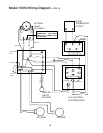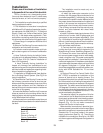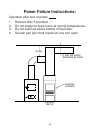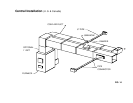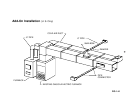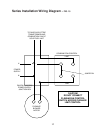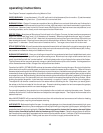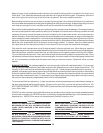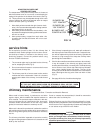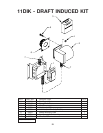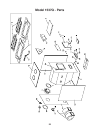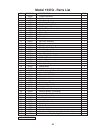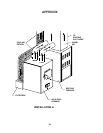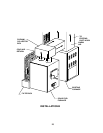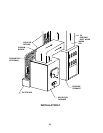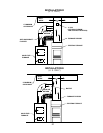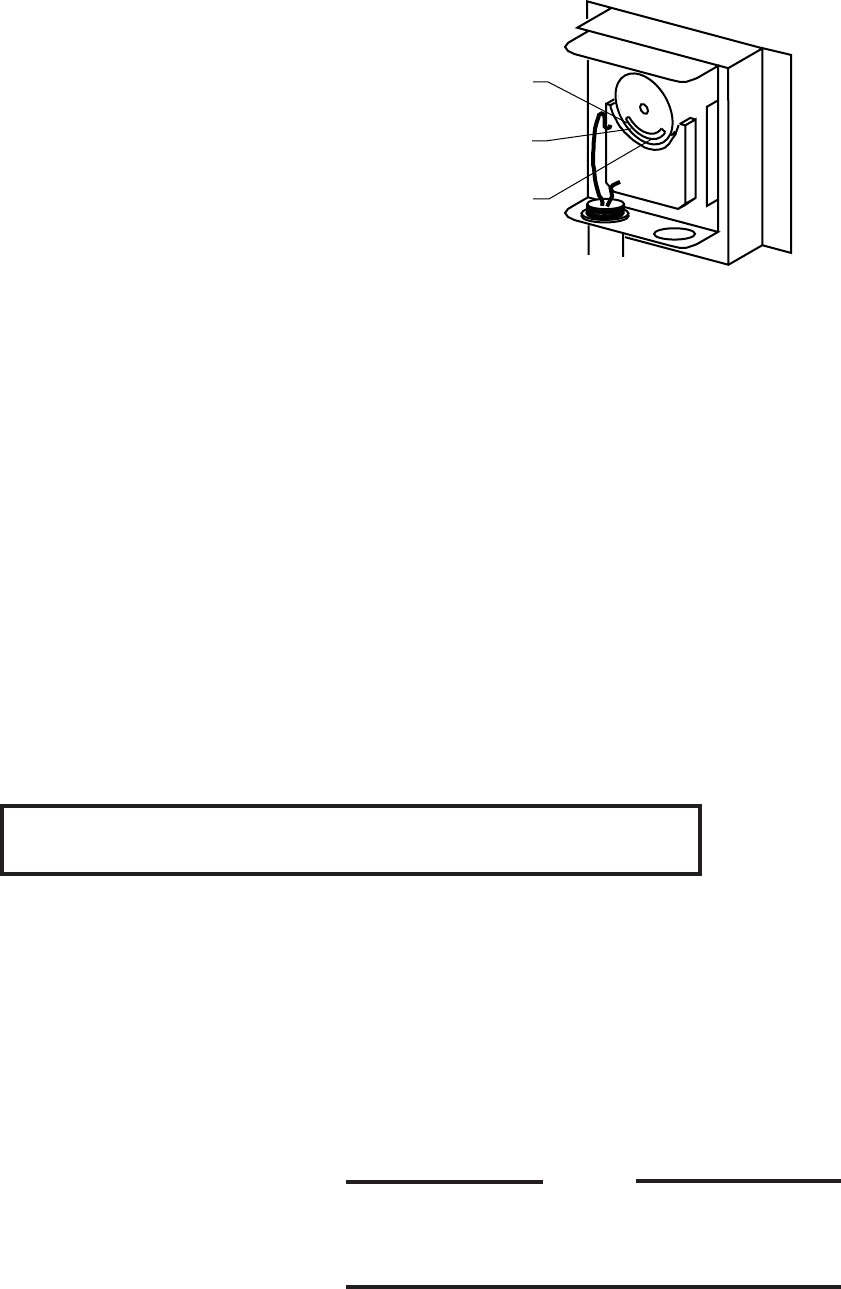
20
service hints
Do not expect a furnace to draw. It is the chimney that
creates the draft. Smoke spillage into the house or exces-
sive build-up of water or creosote in the chimney is not
functioning properly. Correct the problem before using
furnace. Possible causes are:
The connector pipe may be pushed into the chimney
too far, stopping the draft (Fig. 6).
Do not connect two furnaces or a stove and a furnace
into the same chimney flue.
The chimney used for a furnace must not be used to
ventilate the cellar or basement. If there is a cleanout
opening at the base of the chimney, it must be closed
tightly.
1.
2.
3.
If the chimney is operating too cool, water will condense in
the chimney and run back into the furnace. Creosote forma-
tion will be rapid and may block the chimney. Operate the
furnace at a high enough fire to keep the chimney warm
preventing this condensation.
If the fire burns well but sometimes smokes or burns slowly,
it may be caused by the chimney top being lower than
another part of the house or a nearby tree. The wind blowing
over a house or a tree, falls on top of the chimney like water
over a dam, beating down the smoke. The top of the
chimney should be at least 3 feet above the roof and be at
least 2 feet higher than any point of the roof within 10 feet
(Fig. 5).
See page 28 for list of trouble shooting tips.
4.
5.
6.
A DRAFT READING OF .05 TO .06 W.C. IS SUGGESTED FOR PROPER BURNING
OF THIS UNIT WHEN USING WOOD OR BITUMINOUS COAL AS FUEL. WHEN
USING ANTHRACITE COAL, THIS DRAFT READING IS A MINIMUM READING.
chimney maintenance
Creosote and Soot - Formation and Need for Removal
When wood is burned slowly, it produces tar and other
organic vapors, which combine with expelled moisture to
form creosote. The creosote vapors condense in the rela-
tively cool chimney flue of a slow-burning fire. As a result,
creosote residue accumulates on the flue lining. When
ignited, this creosote makes an extremely hot fire.
When coal is burned, the products of combustion combine
with moisture to form a soot residue which accumulates on
the flue lining. When ignited, this soot makes an extremely
hot fire.
The chimney should be inspected at least twice monthly
during the heating season to determine if a creosote or soot
build-up has occurred.
If soot or creosote has accumulated, it should be removed to
reduce the risk of a chimney fire.
Chimney fires burn very hot. If the chimney catches fire, imme-
diately call the fire department, then reduce the fire by closing the
inlet air control. Pour a large quantity of coarse salt, baking soda
or cool ashes on top of the fire in the firebox.
CAUTION
A Chimney fire may cause ignition of wall studs or rafters
which you thought were a safe distance from the chimney.
If you have a chimney fire, have your chimney inspected by
a qualified person before using again.
ADJUSTING BLOWER LIMIT
CONTROL SETTINGS
The temperature in the plenum of the warm air furnace at
which the blower turns on or turns off, is controlled by the
setting of the pointers in the blower limit control (See Fig.
12). These pointers may be adjusted through their entire
range of settings to achieve the desired warm air output
from the furnace. (See Fig. 16 Below)
1.
2.
3.
Move both pointers towards the right (counter clock-
wise) - this increases the temperature setting at which
the blower will turn on and off.
Move both pointers towards the left (clockwise) - this
decreases the temperature setting at which the blower
will turn on and off.
Move pointers away or apart from each other- this
increases the time that the blower will run on each
warm cycle.
BLOWER FAN
"OFF" POINTER
BLOWER FAN
"ON" POINTER
BLOWER LIMIT
POINTER & STOP
FIG. 16



